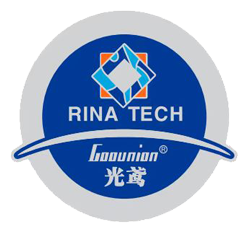Title: Comparing Different Types of Diffuser Plates for Optimal Performance
Diffuser plates are an essential component in many industrial processes, particularly in the field of fluid dynamics. They are used to evenly distribute fluids or gases across a surface, making them ideal for applications such as aeration, mixing, and heat transfer. However, not all diffuser plates are created equal. In this article, we will compare different types of diffuser plates to determine which ones offer the best performance.
- Porous Ceramic Diffuser Plates
Porous ceramic diffuser plates are a popular choice for many applications due to their high durability and resistance to corrosion. They are commonly used in wastewater treatment plants, where they are used to distribute air and oxygen throughout the water to promote bacterial growth and break down organic matter.
One of the major advantages of porous ceramic diffuser plates is their ability to produce fine bubbles. Fine bubbles have a larger surface area than larger bubbles, which allows for more efficient gas transfer. This means that more oxygen can be transferred to the water, leading to faster and more efficient biological processes.
- Membrane Diffuser Plates
Membrane diffuser plates are another popular choice for applications that require fine bubble aeration. They consist of a thin membrane that is stretched over a support frame, with tiny holes or slits that allow air or gas to escape.
One of the advantages of membrane diffuser plates is their high oxygen transfer efficiency. They can produce bubbles as small as 0.5mm in diameter, which allows for more efficient gas transfer. This means that less energy is required to achieve the desired level of aeration.
- Coarse Bubble Diffuser Plates
Coarse bubble diffuser plates are typically used in applications that require large volumes of air or gas to be distributed over a wide area. They are commonly used in industrial wastewater treatment applications, where they are used to agitate and mix the water to promote biological processes.
One of the advantages of coarse bubble diffuser plates is their ability to provide high mixing efficiency. The large bubbles produced by these diffuser plates create significant turbulence in the water, which promotes mixing and enhances biological processes.
- Flat Panel Diffuser Plates
Flat panel diffuser plates are commonly used in applications that require uniform distribution of air or gas over a large surface area. They are commonly used in HVAC systems, where they are used to distribute air evenly throughout a room or building.
One of the advantages of flat panel diffuser plates is their ability to provide uniform air distribution. They are designed to produce a laminar flow of air or gas, which ensures that the air or gas is distributed evenly across the entire surface area.
Conclusion
In conclusion, the choice of diffuser plate depends on the specific application and the desired performance outcomes. Porous ceramic diffuser plates are ideal for applications that require fine bubble aeration, while membrane diffuser plates offer high oxygen transfer efficiency. Coarse bubble diffuser plates are best suited for applications that require high mixing efficiency, while flat panel diffuser plates are ideal for applications that require uniform air distribution.
By understanding the strengths and weaknesses of each type of diffuser plate, it is possible to select the optimal solution for any given application. This can lead to improved performance outcomes and increased efficiency in industrial processes.
For more about Diffuser Plates to understanding, please to visit: RINA TECH Youtube Channel
